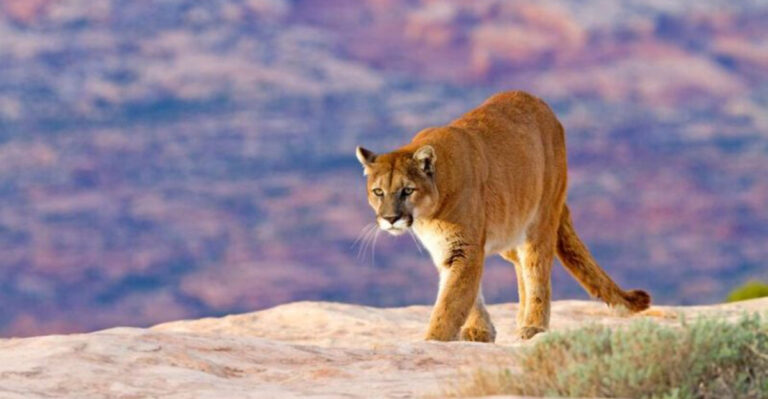13 Things That Make The Sambar Deer A Survival Specialist
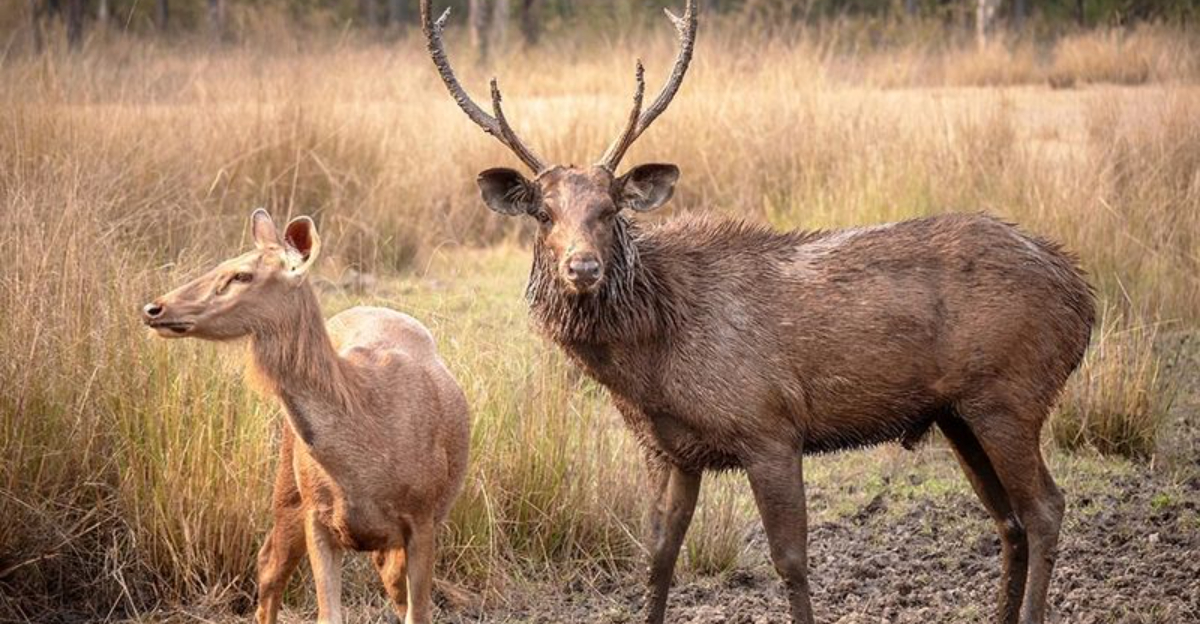
Deep in the forests of Asia lurks one of nature’s most resilient creatures – the sambar deer. Standing tall with magnificent antlers and an uncanny ability to outsmart predators, these forest giants have perfected the art of survival over millions of years.
Their remarkable adaptations have allowed them to thrive in environments where many other species struggle to survive.
1. Masters Of Camouflage
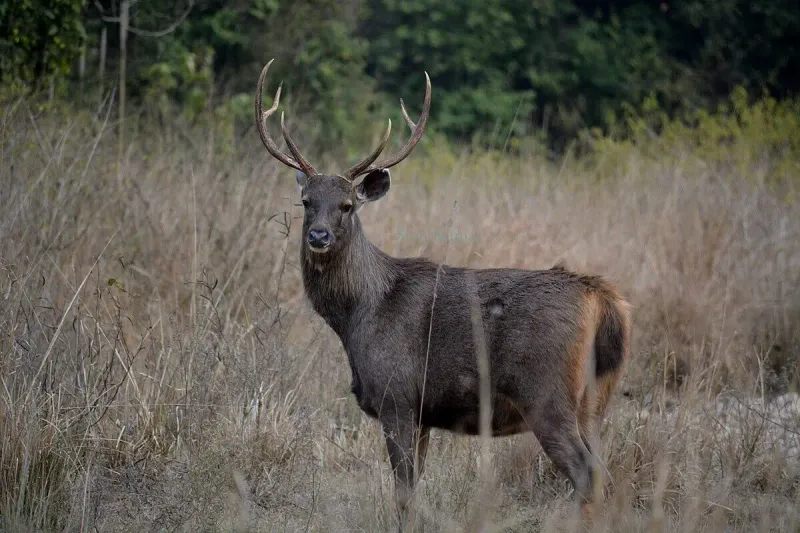
Those rough, shaggy coats aren’t just for show! Sambar deer blend perfectly with forest shadows, making them nearly invisible to predators like tigers and leopards.
Their dark brown color matches tree bark and undergrowth, while light patches mimic dappled sunlight through leaves. Even their antlers resemble branches when they stand still among trees.
2. Swamp-Wading Experts
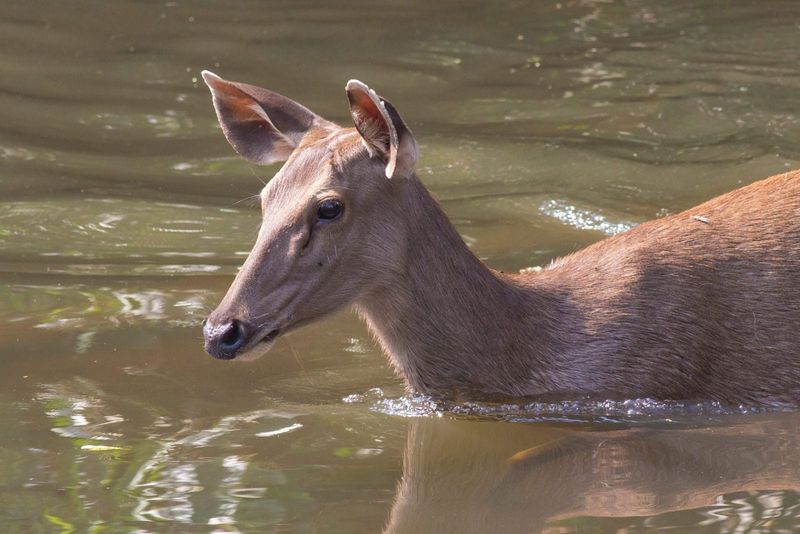
When danger approaches, sambars don’t hesitate to plunge into deep water. Unlike many deer species, they’re exceptional swimmers who can submerge almost completely, leaving just their nostrils above water.
This clever tactic confuses predators who lose their scent trail. Some sambars will even stay submerged for extended periods, moving through waterways to escape threats.
3. Nocturnal Navigators
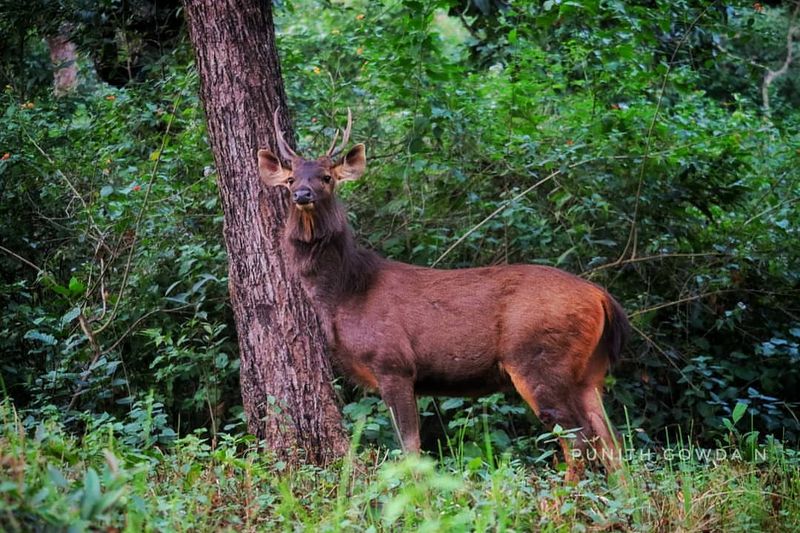
Forget daytime drama – sambars conduct their business under moonlight. These night-loving creatures have evolved exceptional night vision with specialized retinas containing more rods than cones.
Their large eyes capture available light brilliantly, while sensitive ears rotate independently to detect the slightest sounds. This nocturnal lifestyle helps them avoid daytime predators and human hunters.
4. Alarm System Extraordinaire
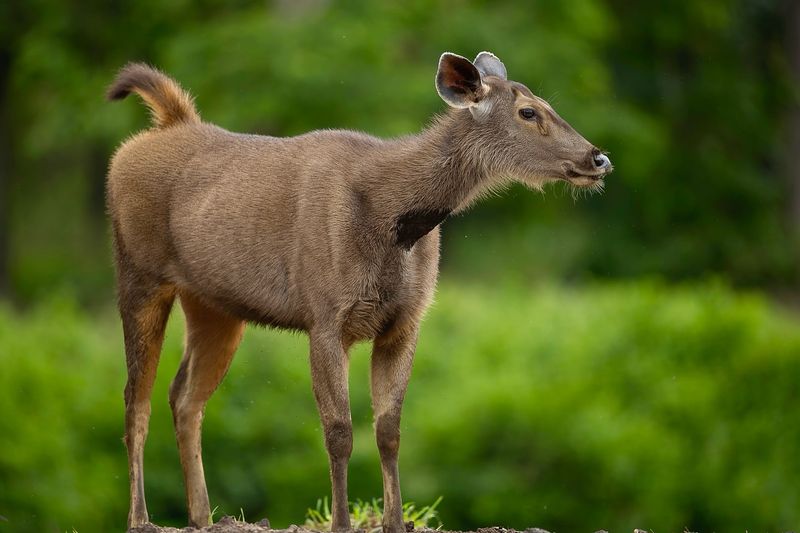
Ever heard a sambar’s warning call? It’s an explosive, trumpet-like bark that echoes through forests, alerting every animal within earshot of danger. These deer don’t just warn their own kind – they create a forest-wide broadcast system.
Tigers and leopards hate this behavior because it announces their presence to all potential prey in the vicinity.
5. Antler Architecture
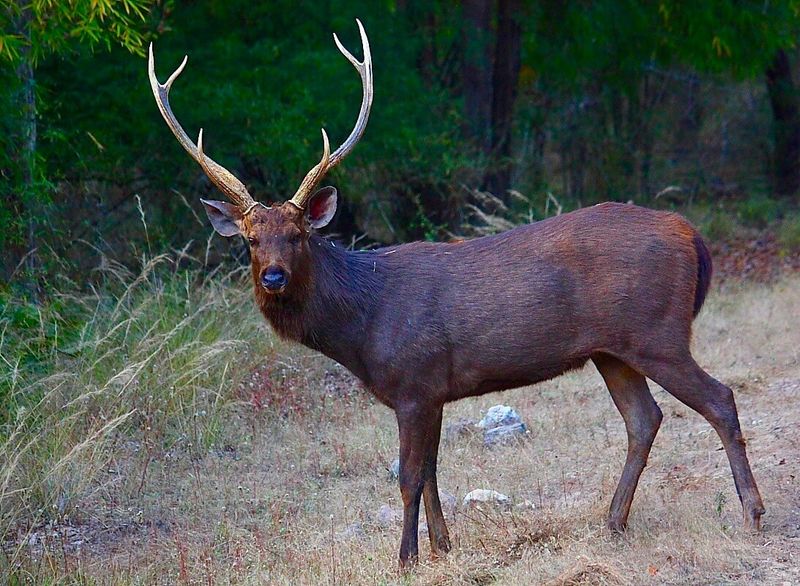
Male sambars grow impressive three-tined antlers that serve multiple purposes beyond the obvious fighting. These antlers can reach over 40 inches long, creating formidable weapons. But they’re also tools!
Sambars use antlers to dig for roots, clear paths through dense vegetation, and even strip bark from trees. Think of them as Swiss Army knives attached to their heads.
6. Weather-Resistant Coat
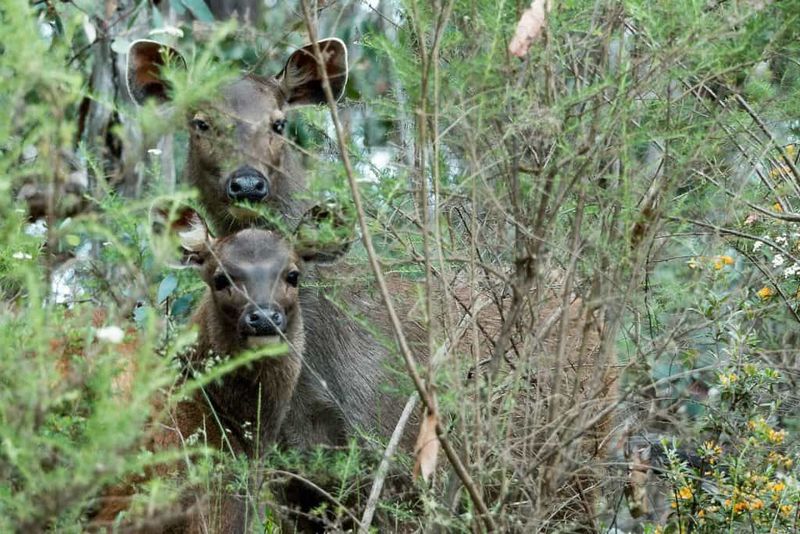
Rain or shine, sambars stay comfortable thanks to their specialized double-layered coat. The outer layer consists of coarse, hollow guard hairs that repel water and provide insulation.
Underneath lies a dense, woolly undercoat that traps warm air close to the body. This combination keeps them dry during monsoon downpours and warm during chilly mountain nights.
7. Salt-Seeking Behavior
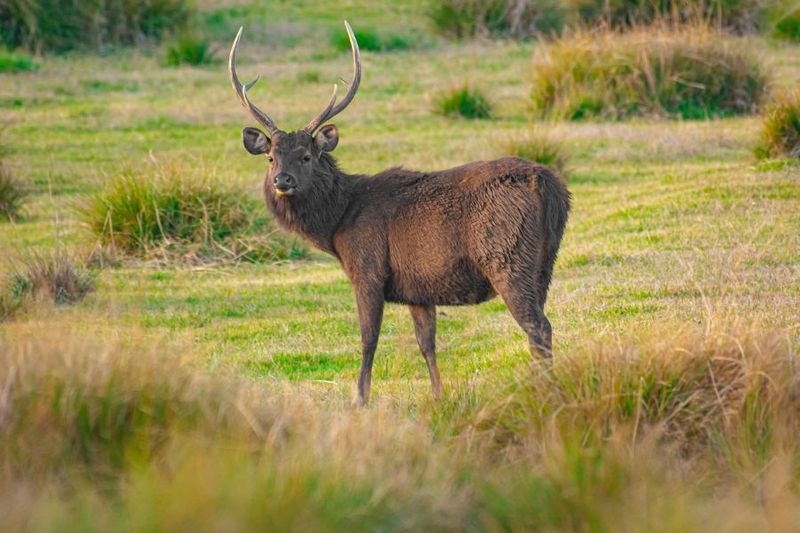
Mineral deficiencies? No problem for the resourceful sambar! These deer actively seek out natural salt licks and mineral deposits to supplement their diet with essential nutrients.
They’ll travel miles to find these spots, memorizing their locations across vast territories. Some even visit coastal areas to lick salt from rocks exposed during low tide – a rare behavior among deer species.
8. Flexible Diet Adaptation

Fussy eaters don’t survive long in the wild. Sambars thrive because they’ll eat practically anything plant-based – leaves, fruits, grasses, bark, aquatic plants, and even some fungi.
During droughts or food shortages, they switch to consuming tougher, less nutritious plants that other deer avoid. This dietary flexibility allows them to inhabit diverse ecosystems from sea level to high mountains.
9. Silent Movement Masters
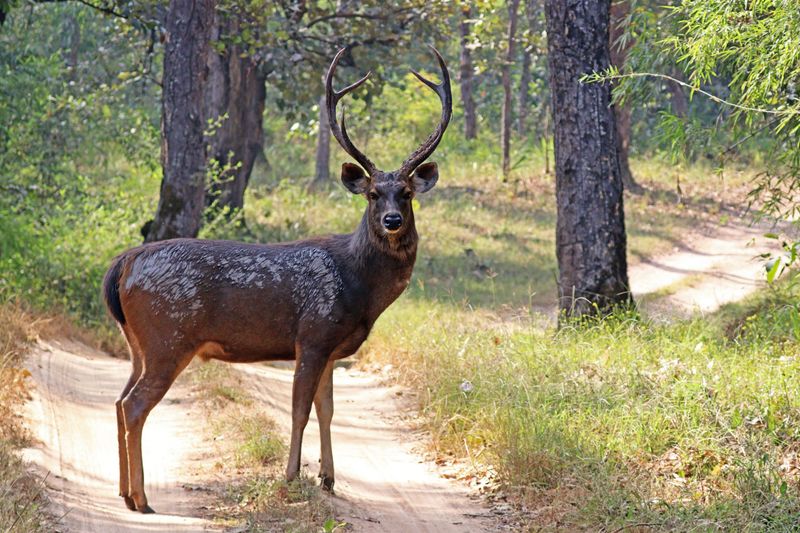
For creatures weighing up to 550 pounds, sambars move with surprising stealth. Their split hooves spread wide on soft ground, distributing weight to prevent sinking or making noise. They place each hoof with deliberate precision, testing ground before committing their weight.
This ghost-like movement allows them to navigate through dry leaves and brittle twigs without alerting nearby predators.
10. Mud-Bathing Ritual
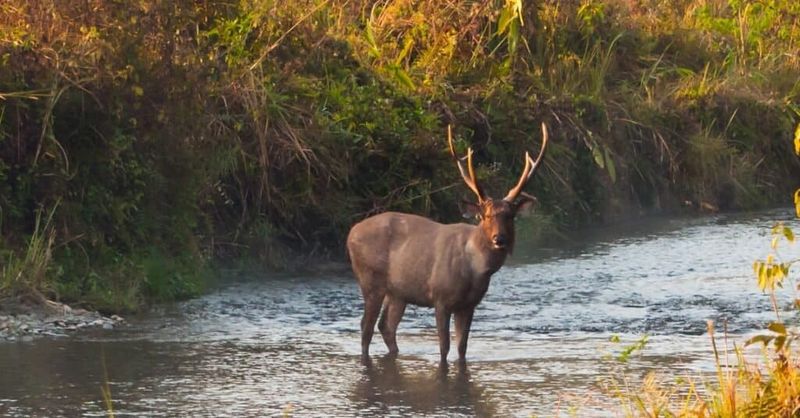
Sambars don’t just tolerate mud – they seek it out! Regular mud baths serve as a natural insect repellent, cooling system, and sunscreen all in one. The thick coating protects their skin from biting insects and parasites while also helping regulate body temperature. After bathing, they’ll rub against trees to remove excess mud, creating distinctive marking posts throughout their territory.
11. Scent-Masking Techniques
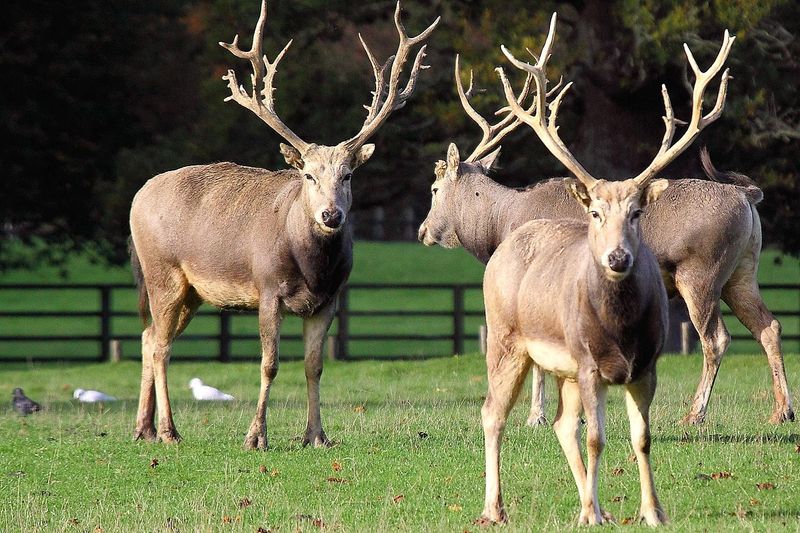
Predators hunt primarily by smell, so sambars have developed clever scent-masking strategies. They’ll urinate on their legs and belly, letting the urine mix with specialized glands that produce confusing scents.
Some even roll in aromatic plants or rotting vegetation to disguise their natural odor. When crossing territories, they may walk through water to break their scent trail completely.
12. Adaptable Social Structure

Unlike deer species with rigid social systems, sambars adjust their grouping behavior based on environmental conditions. During safe periods, they might form small herds for protection and mating.
When predator pressure increases, they scatter into solitary lifestyles, making them harder to track. This flexibility allows populations to adapt quickly to changing threats without disrupting breeding patterns.
13. Extreme Habitat Range
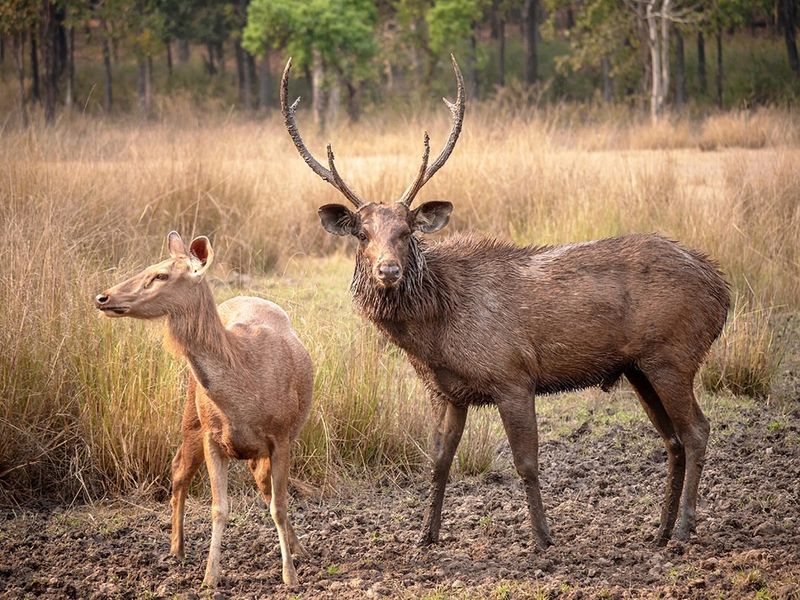
From scorching lowland forests to freezing Himalayan slopes, sambars have conquered it all. No other deer species occupies such diverse environments – from sea level to 12,000 feet elevation. They’ve adapted to monsoon forests, dry deciduous woodlands, mountain grasslands, and even semi-desert regions.
This remarkable adaptability has helped them survive while more specialized deer species have gone extinct.



